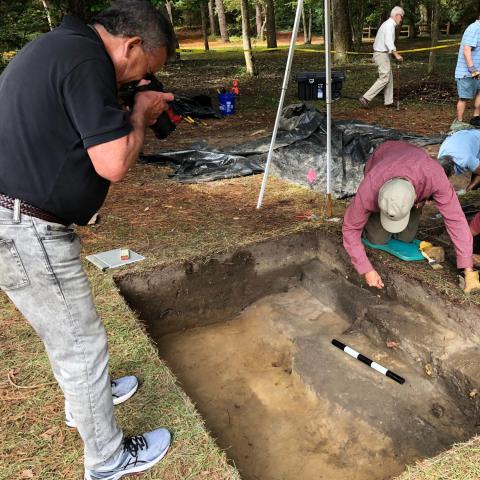
A World War II-era aerial bomb found at Cape Hatteras National Seashore will be detonated Friday/NPS
A live bomb dating to World War II found on the beach at Cape Hatteras National Seashore in North Carolina is to be detonated Friday.
The aerial bomb found within Buxton town limits was examined Thursday by a U.S. Navy Explosive Ordnance Disposal unit from Norfolk, Virginia, and confirmed to be a live military ordnance.
The demolitions team placed the unexploded ordnance, described as a 100-pound aerial bomb from the World War II era, deep inside the beach near the Cape Hatteras Lighthouse Beach Access parking area. At around 9 a.m. Friday the unit will detonate the ordnance in place. No damage to nearby structures is expected; however, Buxton residents and visitors may hear the detonation.
To ensure visitor safety, a safety perimeter measuring approximately a half-mile has been established around the buried bomb. The following areas are closed until the U.S. Navy EOD unit detonates the UXO and determines that the entire perimeter is safe.
- Cape Hatteras Light Station grounds and parking area
- Old Cape Hatteras Lighthouse parking area and beach
- Cape Hatteras Lighthouse Beach Access and parking area
- Buxton Beach Access and parking area
Over the years more than a few bombs from World War II have washed ashore at Cape Hatteras. The Atlantic Ocean off Cape Hatteras and Cape Lookout saw plenty of action during World War II, with both German U-Boats and Allied merchant ships sunk off the cape.
"In 1942, the Germans aimed to sink U.S. merchant ships that were carrying supplies to England. U.S. and Royal Navy ships patrolled the coast to protect them and, when necessary, take on the Germans," according to the seashore. "One of the most overlooked engagements of World War II, (the so-called Battle of the Atlantic) claimed 80 ships and hundreds of lives."
In a residential area of Ocracoke near the southern tip of Cape Hatteras the British government leased a small patch of land to use as a cemetery for their dead from World War II. On May 11, 1942, a British ship, the HMT Bedfordshire, was torpedoed and sunk by German U-boats. There were no survivors. Only four bodies were recovered, and today they are buried in Ocracoke. The small, neat graves with concrete gravestones are covered with pebbles and encircled by a white picket fence.


 Support Essential Coverage of Essential Places
Support Essential Coverage of Essential Places






